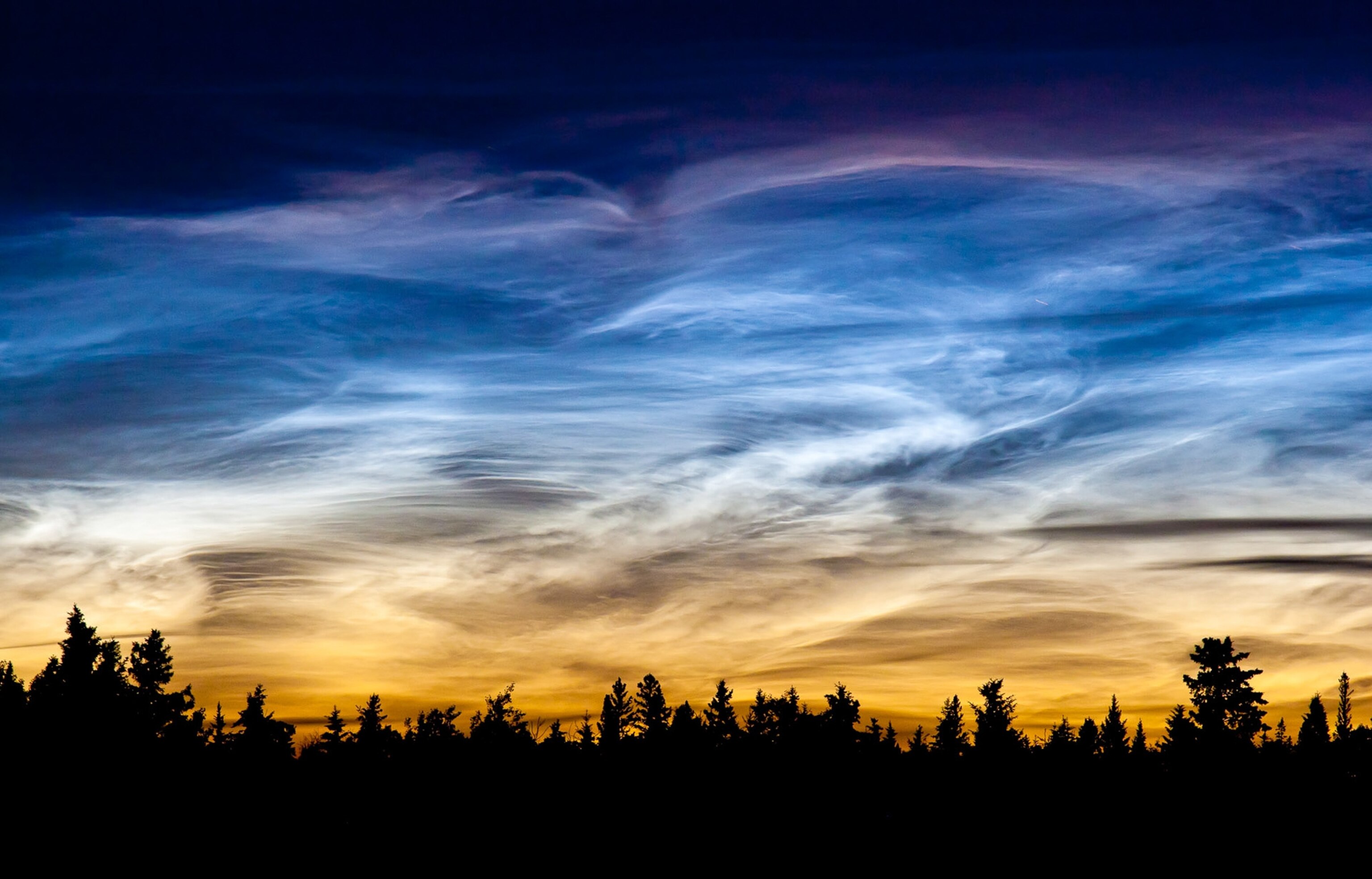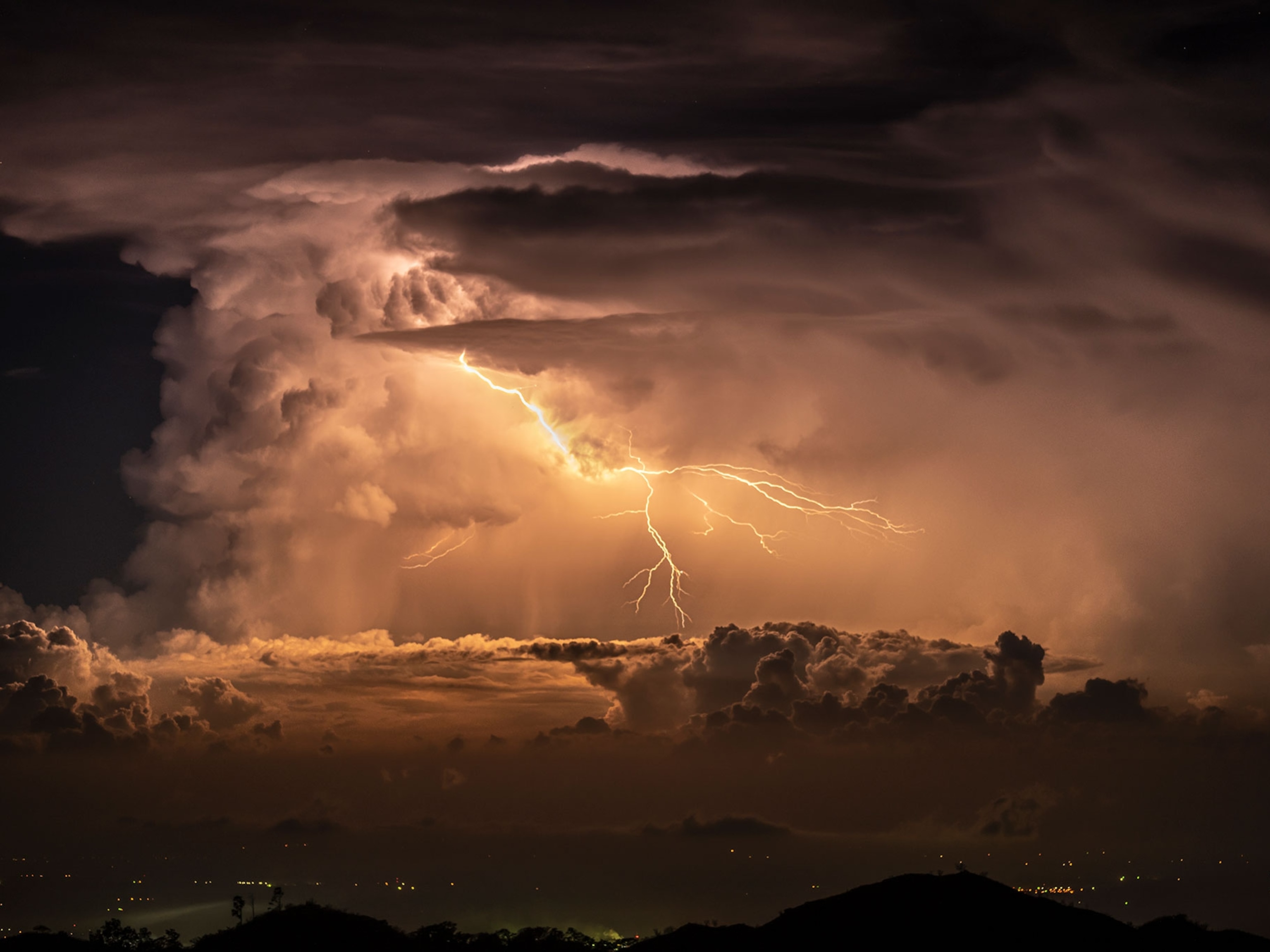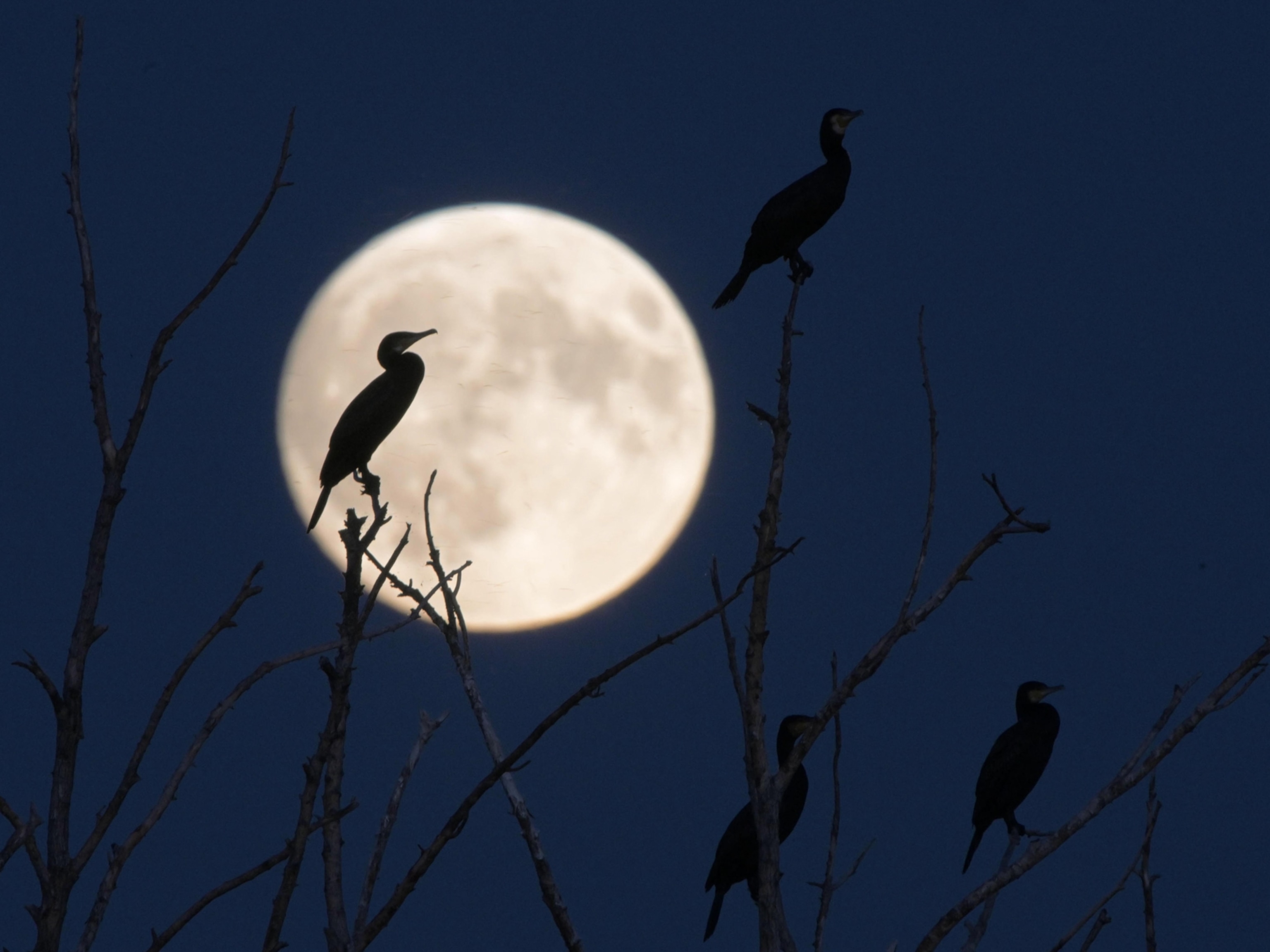
Meteor Dust Boosts Night-Shining Clouds
Water vapor from meteor smoke seeding high-altitude clouds, study says.
Mysterious night-shining clouds and trails of smoke left by meteors share an intimate link, a new study says.
Satellite images collected during the last five years reveal for the first time that water vapor is freezing around nanoscopic bits of meteor smoke, thus seeding the formation of high-altitude noctilucent, or night-shining, clouds.
Such clouds appear about 50 miles (80 kilometers) above each Pole during its summer months. Yet unlike white water vapor clouds near the planet's surface, noctilucent clouds are electric blue in color, thanks to tiny crystals that preferentially scatter that color of light.
Study co-author James Russell, an atmospheric scientist at Virginia's Hampton University, and colleagues used NASA's AIM satellite to chemically identify the meteor smoke in the ice crystals of night-shining clouds.
The team discovered that each nanometer-size bit of meteor smoke takes up about 3 percent of each crystal's volume.
Night-Shining Clouds Boosted by Methane?
What's more, night-shining clouds are on the rise—likely due to human activities, Russell said. (Related: "Mysterious 'Night-Shining Clouds' Sighted.")
"Earth's upper atmosphere [has] been changing in ways that we don't fully understand," he said.
"Noctilucent clouds are occurring more often, getting brighter, and creeping down toward the Equator. I have a strong suspicion this is because of methane."
Methane seeps out of human garbage dumps, fuel refineries, livestock, and even people themselves.
The chemical not only serves as a potent greenhouse gas, but it also creates extra water vapor when it reaches the top of the ozone layer, about 60 miles (100 kilometers) above Earth's surface.
Russell said this extra water vapor—an increase of 15 percent over the past decade, in step with the abundance of methane gas—has likely contributed to night-shining clouds being 20 to 30 percent brighter and five times more frequent.
"You need three things to make them: very cold temperatures, water vapor, and a particle for water to stick to and freeze," he said.
"We've finally identified the particle—the meteor smoke—and the methane seems to be adding extra water vapor."
The study of meteor smoke and night-shining clouds was published recently in the Journal of Atmospheric and Solar-Terrestrial Physics.





